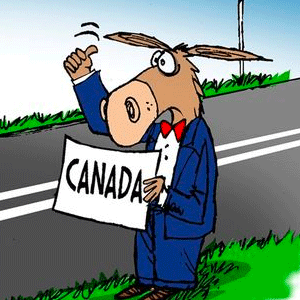After Ferguson's Fires, Vote Next Time
Televised scenes of fires and looters ravaging storefront buildings in Ferguson, Missouri brought flashbacks in my memory to other urban riots a half-century ago -- and to lessons that Ferguson officials failed to learn.
Among them: Never underestimate the power of police brutality to enflame black communities.
To be sure, I am not saying that all police misconduct claims are legitimate. But all should be treated with respect. That's the first step in meeting the larger challenge of fostering trust and cooperation between police and the communities they patrol.
It was coincidentally 50 years ago that a riot erupted in Harlem after a white police officer fatally shot a 15-year-old black youth in front of his friends and other witnesses. The Harlem Riot, as it became known, turned out to be the first in a five year-long wave that marked the late 1960s as an era of "long hot summers" in dozens of cities across America.
President Lyndon B. Johnson named a special commission headed by Illinois Gov. Otto Kerner that found almost all of the disturbances to be triggered by outrage over shootings or "a reservoir of underlying grievances" of which "police practices" topped the list.
Released in 1968 before the assassination of the Rev. Martin Luther King, Jr., sparked more eruptions, the Kerner report memorably declared our nation to be "moving toward two societies, one black, one white -- separate and unequal."
Although President Johnson largely ignored his own report after its release, the civil rights and "war on poverty" measures he passed opened opportunities in ways that helped close political, economic and social gaps. Widespread changes helped the black middle class to double in size by the mid-1980s and eventually pave the way to the nation's first biracial president.
Local governments and police departments got smarter, too. Racial and ethnic diversity expanded in police ranks and community policing strategies stressed good neighborhood relations as an effective crime-fighting and community-building effort.
But not everybody got the news. You could see that gap in the contrast between events in Ferguson, where a police officer fatally shot unarmed 18-year-old Michael Brown, to nearby St. Louis, where police later fatally shot 25-year-old Kajieme Powell, who was wielding a knife at police.
Coming 10 days into the stormy protests over Brown's death, the St. Louis case similarly attracted international attention but notably less public outrage. A cell phone video that St. Louis police released the next day made a big difference -- and a great argument for more police dashboard and body video cameras.
But the candor and transparency with which the city's police chief Sam Dotson responded probably was more important.
About 90 minutes after the incident, Dotson was on the scene to offer a detailed explanation and take reporters' questions. That's less than the several hours for which Brown's body was left in the street, according to news reports. Throughout the first two weeks after Brown's death, Ferguson Police Chief Thomas Jackson was about as forthcoming with useful information as North Korea's Kim Jong Un.
Worse, when the town greeted peaceful protestors with full riot gear and armored military vehicles, even prominent conservatives were divided over whether that was too much.
But we still see the Kerner report's "two nations" in national opinion polls. Since the Brown shooting, a new New York Times/CBS News nationwide poll finds blacks and whites to be as divided over the police conduct issue as they famously were over the O.J. Simpson case -- which itself opened up a big divide over how much African-Americas trust the criminal justice system.
For example, while 45 percent of blacks said they have experienced racial discrimination by the police at some point in their lives, almost no whites said they had. And when asked about whether police forces should reflect the racial makeup of the communities they serve, nearly six in 10 blacks said yes while whites are about evenly divided.
In Ferguson, which is two-thirds black, the police force and city government are close to all-white. Black participation in local elections has been much lower than white participation. Perhaps now that will change. Nothing gets the attention of politicians like a big turnout.
========
E-mail Clarence Page at cpage@tribune.com.
(c) 2014 CLARENCE PAGE DISTRIBUTED BY TRIBUNE MEDIA SERVICES, INC.






